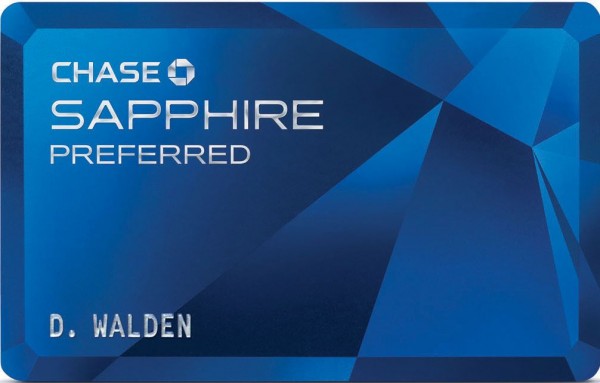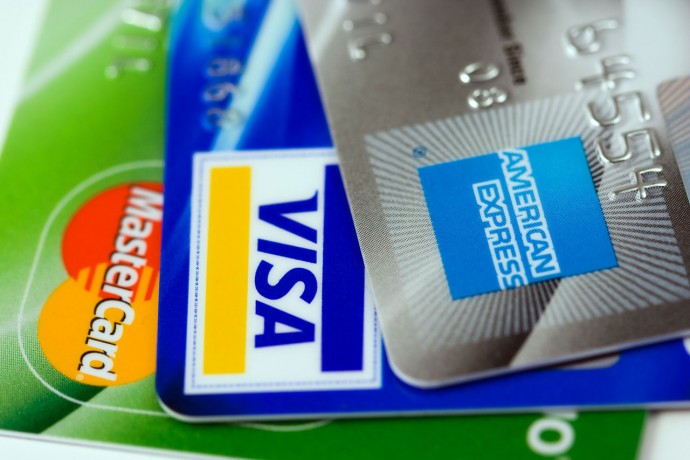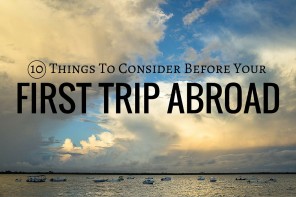How does one about choosing the right ATM cards and credit cards for travel? The market’s flooded with a dizzying array of cards with a range of benefits and drawbacks. Here’s my decision-making metric on how to choose appropriate credit cards and ATM cards:
What I look for in credit cards for travel:
Zero international transaction fees.
I want to be able to use my card abroad without incurring exchange fees and international fees.
High signing bonus of points/miles.
I would prefer to receive 40,000 – 60,000 points when I sign up for a given credit card. Note: 30,000 is not very high – hold out for more.
Low initial required spend to receive signing bonus.
Most cards with 40,000 – 60,000 bonus points at sign-up require expenditures of $1,000 – $5,000 US in order to award the point/mile bonus to the cardholder – usually within 1-3 months of card activation. It’s a lot easier to assure expenditures of $1,000 than. say, $5,000 – make sure you know how much you need to spend to get the bonus miles, and aim for cards with reasonable required spends.
Good returns of points / miles for each dollar spent.
Getting one point/mile per dollar spent is easy – getting two to three per dollars spent is preferable if and when possible.
Fair conversion rates of points from card to participating travel programs.
I prefer cards with 1:1 conversion rate of points to miles at related travel programs – meaning one point earned on the card equals one mile on a participating airline, or one point at a participating hotel. Some cards transfer points at a FRACTION of their value, which means your points aren’t worth as much as you think they are. Check the fine print.
Reasonable annual fee or no annual fee.
Many credit cards with good point/mile earning opportunities carry fees of $50-100 per year. Some top-tier cards charge as much as $500. Some people will see no benefit in cards with annual fees, others will. Make sure annual fees paid match your ability to reap the rewards of a given card.
Good customer service.
Access to human customer service reps via phone and/or internet is a great thing.
What I look for in an ATM card:
Reimbursement of ATM fees anywhere in the world.
Traveling for months at a time means hitting the ATM fairly frequently for cash. The last thing I want to do is spend hundreds of dollars needlessly on ATM fees.
No minimum account balance required.
I want to be able run my account down to a penny if I need to, without fees.
No account service fees.
I prefer accounts that don’t deduct monthly “service” fees.
As detailed in my “Never Run Out of Cash While Traveling” post, I currently use the following amount of credit cards and ATM cards for travel and to maintain my home life while traveling.
- (3) credit cards
- (2) ATM cards
At present, the cards I use (and why I use them) are as follows:
Credit Card #1: Chase Sapphire Preferred Card

The Chase Sapphire Preferred Visa is my primary card for mileage/point acquisition and for use while traveling as of 2015.
BENEFITS OF USING THIS CARD
- 40,000 bonus points – awarded after $4,000 of expenditures within first three months of card use
- 2x points on travel and dining expenditures
- 1:1 point transfer to United Airlines, Marriott, Southwest Airlines and other travel awards programs
- Zero foreign transaction fees
- Ability to earn additional points by shopping through Chase’s “Ultimate Rewards” marketplace
- Collision Damage Waiver insurance provided through this credit card for renting cars (so long as you rent the car using said card). Admittedly, this is common benefit with most major cards.
CAVEATS
- First year of card use is free, subsequent years of card use incur a $95 annual fee.
WHY I APPLIED FOR THIS CARD
- Sign-up bonus of 40,000 miles (given initial $3K spend) is competitive with other cards.
- No foreign fees make this a great card for use abroad.
- Chase used to offer a 7% bonus point payout at the end of the year based on how many points you’d earned. This program has unfortunately been terminated.
PERSONAL EXPERIENCES
- CUSTOMER SERVICE: Customer service has been great on this card. Generally, when I call in, I can get a human being on the phone within minutes. Further: I lost this card while traveling in Guatemala in 2015. For just $15, Chase customer service FedExed me a new card, which I received in under a week.
- BONUS POINTS EARNED: The 40,000 signing bonus was easy to achieve, and in about 3.5 years of usage, I’ve earned 135,000 points total. That’s enough for two United “economy saver” roundtrip flights to Rio de Janeiro, or 1.5 roundtrip flights to Nairobi (for example). Not bad.
- “ULTIMATE REWARDS” SHOPPING: I shop for whatever I can through Chase’s online mall to earn additional point multipliers of 2x, 3x, 4x (and sometimes more) at vendors like Apple Store, Backcountry, Crutchfield, REI, Sierra Trading Post and others. The list of vendors is actually good and it’s completely free to click through the Chase marketplace site – so why not?
- DINING AND TRAVELING BONUSES: Dining and travel expenditures reliably credit 2x points to your account to the point where it’s a no brainer to pull this card out to pay for dinner or drinks.
WHO SHOULD / SHOULDN’T APPLY FOR THIS CARD
- Anyone that can hit the $4,000 required spend in the first three months of usage should consider applying for this card and using it as their primary card due to the range of points and service benefits.
- However, if you can’t hit the $4,000 required spend in the first 3 months of card use in to get the 40,000 bonus points, getting this card would be a waste – start with a credit card that doesn’t carry an annual fee instead.
CONCLUSION / CARD RATING
- This is my most highly recommended travel credit card at present.
- Five out of five stars. ★★★★★
Credit Card #2: Citi / AAdvantage Platinum Select Card
This is my secondary credit card for both mileage acquisition and use while traveling.
BENEFITS OF USING THIS CARD
- 30,000 bonus AAdvantage miles (given that you spend $1,000 within first 3 months of card use)
- First checked bag is free on domestic American Airlines and US Airways flights for yourself and up to 4 traveling companions
- Earn 2x AAdvantage miles per $1 spent on eligible American Airlines and US Airways expenditures
- Coming soon: no foreign transaction fees on this card (new in 2015?)
CAVEATS
- First year of card use is free, subsequent years of card use incur a $95 annual fee.
WHY I APPLIED FOR THIS CARD
- At the time I applied for this card, 50,000 bonus miles were offered as a signing bonus. Much better than the current 30,000.
- I also figured I’d take advantage of the free domestic baggage allowance on American Airlines and US Airways.
PERSONAL EXPERIENCES
- BAGGAGE FEES: I learned the hard way that this card will NOT cover your baggage fees on international flights with American Airlines. Bummer. And for whatever reason, I haven’t flown AA domestically since I got the card, so I haven’t reaped the free baggage benefits. Oh well.
- CUSTOMER SERVICE: I lost this card while traveling in Guatemala in 2015. Free of charge, customer service sent me a replacement card which I received within a week.
- CURRENT THOUGHTS: As of mid-2015, this card is realistically no longer a great fit for me and I may look into canceling and replacing it with a different miles/points card. I don’t fly American Airlines nor US Airways enough to justify paying the $95 fee on this card at present.
WHO SHOULD / SHOULDN’T APPLY FOR THIS CARD
- This card would be no-brainer for anyone that frequently flies American Airlines and US Airways domestically in the US. The benefit of free first checked bags alone would cover the annual fee of the card quickly.
- If you can’t hit the $1,000 required spend in the first 3 months of card use in to get the 30,000 bonus points, there is little reason to get this card.
CONCLUSION / CARD RATING
- Appropriate for some travelers, but I’d recommend shopping around before signing up.
- Four out of five stars. ★★★★☆
Credit Card #3: Any No-Annual-Fee Card
For my third credit card, I use a basic credit card with NO ANNUAL FEE. This can be any type of card, from any bank. I don’t expect any more than a $200 balance on any given month from my autopays and subscriptions, so there’s no reason to pay for usage on this card.
This card gets used only for autopays and subscriptions of that need to be maintained while I’m traveling.
The reason this card does not travel with me:
The last thing I want to do is update my credit card information for autopays/subscriptions while traveling – and if I apply my autopays/subscriptions to one of my cards that travels with me and then LOSE that card, I have to cancel said card and spend half a day of valuable travel time sitting on the computer and re-entering credit card information into a bunch of different websites in order to maintain my web hosting, professional website subscriptions, utilities at my apartment, etc. This is NOT fun in the LEAST, and I’ve had to do it over HORRIBLE internet connections in other countries, which made it even more frustrating.
Learn from my mistakes and put all your autopays/subscriptions on a zero-fee card, and then don’t use it for anything other than those fees.
ATM Card #1: Charles Schwab
My primary ATM card for travel is connected to a checking account at Charles Schwab Bank. Note: this card is likely only available to US citizens as Schwab is a bank based in the US.
BENEFITS OF USING THIS CARD / ACCOUNT
- Schwab reimburses ATM fees incurred anywhere in the world, which is amazing for any traveler.
- No minimum balance requirements. Keep a penny in the account if you want (and/or run it down to a penny).
- No account service fees.
CAVEATS
- Though Schwab is a large bank, they doesn’t have physical locations everywhere in the US, so physical deposits and in-person interaction can be tricky in certain cities. On balance, it’s possible to deposit checks electronically, by taking pictures of the face/back of checks valued up to $1,000 US.
WHY I APPLIED FOR THIS CARD
- Same as the benefits above – no ATM fees anywhere in the world, no minimum balance requirements, no service fees. Very straightforward.
PERSONAL EXPERIENCES
- APPLICATION / APPROVAL PROCESS: Opening this account was easy. I applied online for the “High Yield Investor Checking” account, was quickly approved, and received my ATM card and checks within two weeks of approval.
- FUNDING YOUR CHECKING ACCOUNT: Note that you must open an “Individual Brokerage” account with Schwab in order to get a “High Yield Investor Checking Account”. Though this may seem confusing, it’s not – just go through the online application process, and once you’re approved, deposit initial funds to the brokerage account. As soon as said money hits the brokerage account, transfer all funds into the checking account. This process is simple and totally free. From this point forward you’ll be able to make your deposits directly into the checking account. Easy.
- ACCESSIBILITY OF CASH: I have not found an ATM machine that this card hasn’t worked in as of yet.
- ATM FEE REIMBURSEMENT: I used this card for six months of travel in Central America in 2015 and was reimbursed all ATM fees incurred. Reimbursements are clearly noted on bank statements. I continue to use this card domestically in the US as my primary ATM card due to fee reimbursement and zero account fees / service fees.
WHO SHOULD / SHOULDN’T APPLY FOR THIS CARD
- This ATM card is a great choice for any traveler looking to save on ATM fees, that doesn’t want to worry about maintaining a minimum balance in their account.
- The only people I wouldn’t recommend this card for: those that already have comparably awesome ATM cards through other banks.
CONCLUSION / CARD RATING
- The Charles Schwab ATM card (via an Investor Checking account) is an easy choice for any traveler.
- Five out of five stars. ★★★★★
ATM Card #2: any ATM card, connected to a different bank than Schwab
I carry a second ATM card connected to a different bank than Charles Schwab – this way, in case my Schwab card is stolen/compromised/lost, I still have access to cash.
I’d prefer that this card carry ATM fee reimbursement anywhere in the world, but at present it’s just your average ATM card from your average bank, and incurs ATM fees when used at non-network ATMs. No problem – it’s just a backup card after all!
What Other Cards Do You Recommend?
Card types and benefits change quickly and I don’t at present have goals of doing frequently updated card comparisons. Other sites like ThePointsGuy make this their business – check out their rundowns to see what’s good as of late.
RELATED POST: click here to learn how to Never Run Out of Access to Cash While Traveling.







